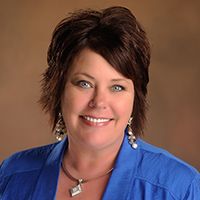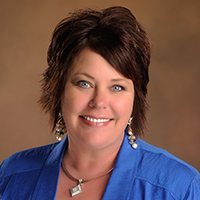How to Build a Retirement Strategy While Reducing Risks
You don't necessarily have to take big risks to reap big rewards; a low-volatility investing strategy may be best for you.

You hear it all the time: No pain, no gain. Or when it comes to investing: No risk, no reward.
You learn about a guy who made a killing on some hot stock, and you think if you don't make that same kind of bold move with your investments, you're missing out.
For most individuals, it isn't so. You usually don't have to take tremendous risks to make money or get ahead. In fact, a portfolio with lower volatility sometimes is a safer way to go.
From just $107.88 $24.99 for Kiplinger Personal Finance
Become a smarter, better informed investor. Subscribe from just $107.88 $24.99, plus get up to 4 Special Issues

Sign up for Kiplinger’s Free Newsletters
Profit and prosper with the best of expert advice on investing, taxes, retirement, personal finance and more - straight to your e-mail.
Profit and prosper with the best of expert advice - straight to your e-mail.
Helping people understand their true level of risk is a personal mission for me.
My dad was a plant worker, but he had saved a lot of money with his 401(k), his lump-sum pension and his thrift savings account. Then, when he retired in 1998, he moved his money to a large brokerage firm. And in a matter of about two years—between 2000 and 2002—he saw 50% of that money disappear.
He was just 58 when he retired, so not only did he lose that money, but also he had to withdraw money from his savings to live on because he wasn't old enough to start taking Social Security benefits.
He finally came to me in 2003, when I had established myself as a financial adviser. He said he couldn't sleep anymore. He needed my help.
It took us a long time to get him where he was comfortable again, and he never fully recovered. He died young, and I suspect the stress of what happened to his money is part of what killed him.
That event still drives me. I try to prevent people from going through the grief and anxiety my dad experienced. Retirement is supposed to be a happy time of life! It's my job to give people good information so they know how to evaluate the level of risk they're dealing with.
Often, I'll show them two portfolios as an example, and ask which they would choose. Portfolio one includes an index-linked mutual fund that has an average annual return of 5.6% over 15 years. Portfolio two, a low-volatility strategy, has an average return of 5.35%. And of course, they choose the one with the higher return.
But here's the thing: If you started with $1 million in the first portfolio on January 1, 2000, and never took any money out, at the end of 2015, you'd have just $1.8 million. That's not a 5.6% return. You'd have experienced huge losses during that 15-year period—including 9% in 2000, nearly 12% in 2001, 22% in 2002 and 37% in 2008. Now, there were years when there were big gains as well. But if you suffer huge losses, that absorbs the real money.
Portfolio two only had a 5.35% average return for the same 15-year period, but the difference is that in years when there were losses, they were much smaller losses. So when the market was coming back, there was much less to recover. In our low-volatility approach, you'd have ended up with more than $2.2 million.
So how do you determine volatility? At our practice, we use the sharpe ratio. Designed in 1966 by Nobel Prize-winner William Sharpe, it will show pretty clearly what level of risk you're taking. But you have to do the math—or have your adviser do it for you.
So here's the end of my story: When my dad passed away, he left his money to his grandchildren, three of whom are my children, and I had to help them decide how they should invest it.
Dad had stressed so much over his money that I couldn't live with myself if we lost money in high-risk investments. And even though they're young, I positioned the grandkids' money in a safer environment. That doesn't mean it isn't growing. It is. And with hopefully smaller losses over time, it can outperform riskier investments.
As a society, we have been taught we have to take big risks to reap big rewards. But when you marry money and math together, low volatility can win the race.
Christy Smith is an Investment Adviser Representative and founder of The Presley Group and Presley Wealth Management, which focuses on retirement planning and insurance. She has a radio talk show and has written two books.
Advisory services are offered through Eqis Capital Management Inc. ("EQIS") a Registered Investment Adviser, and may only be offered in states where registered. EQIS does not provide insurance products or services. This is not an offer to sell securities or provide investment advice, which may be done only after a client suitability review is conducted and appropriate disclosures made. Neither The Presley Group nor EQIS provide tax or legal advice. The Presley Group LLC and EQIS Capital Management Inc. are not affiliated.
Kim Franke-Folstad contributed to this article.
Profit and prosper with the best of Kiplinger's advice on investing, taxes, retirement, personal finance and much more. Delivered daily. Enter your email in the box and click Sign Me Up.

Christy Smith, an Investment Adviser Representative and insurance professional, is the founder of Presley Wealth Management, which focuses on retirement planning and insurance. She co-hosts a weekly radio show. She is married and has three children.
Investment advisory services offered through AE Wealth Management, LLC (AEWM). AEWM and Presley Group and Presley Wealth Management are not affiliated entities. Investing involves risk, including the potential loss of principal. Insurance and annuity product guarantees are backed by the financial strength and claims-paying ability of the issuing insurance company.